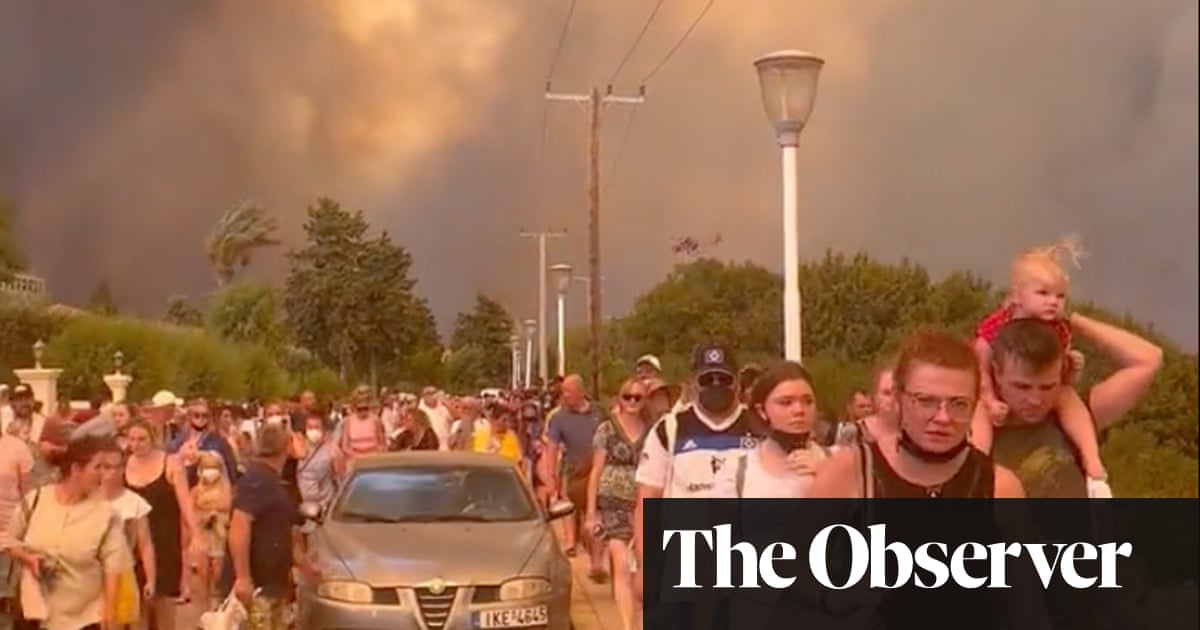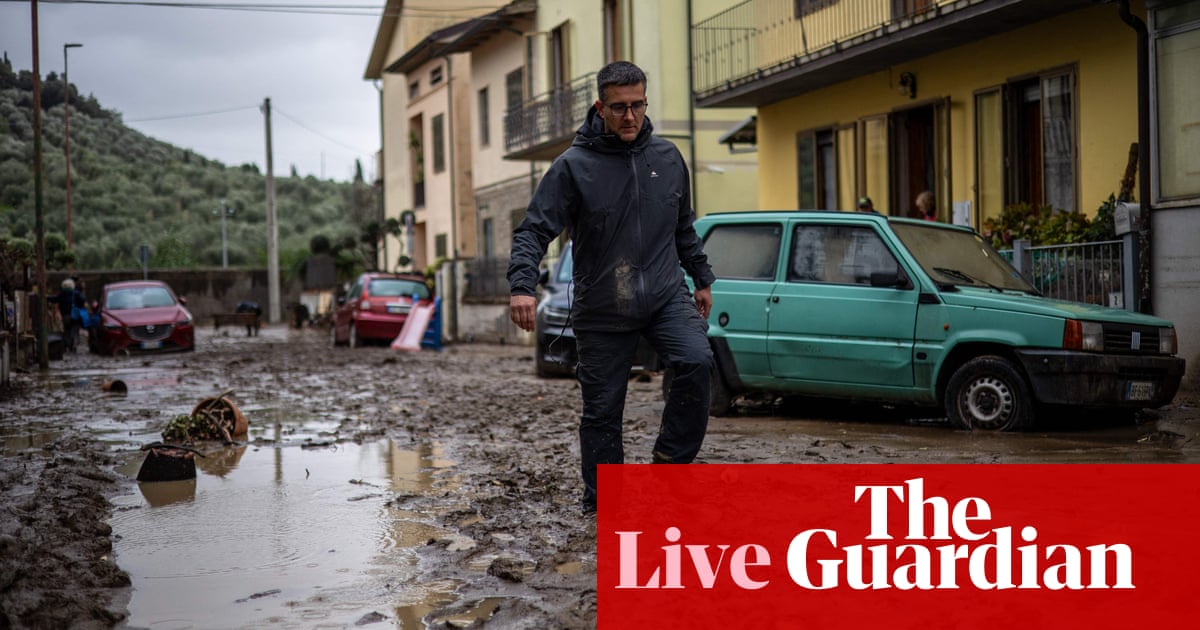
Thousands of homes are under threat from a raging wildfire that erupted in northern California on Tuesday, as the state simmers in a brutal and potentially historic heatwave.
Roughly 28,000 residents have been forced to evacuate as the Thompson fire quickly swept across more than 3,000 acres (1,200 hectares) near the city of Oroville, about an hour outside Sacramento, California’s capital.
Photojournalists captured intense scenes on Tuesday night as the blaze tore through homes and vehicles in the rural enclave in Butte county. Officials confirmed that at least four structures have been destroyed.
More than 1,400 fire personnel from across the state have deployed to battle the blaze, which was at 0% containment Wednesday morning. Four firefighters suffered minor injuries, officials said, as dangerously high temperatures continue to threaten their health and safety.
The California governor, Gavin Newsom, declared a state of emergency on Wednesday to ensure resources are readily available to support response and recovery to the fire.
Newsom said on Tuesday that California had secured a fire management assistance grant (FMAG) from the Federal Emergency Management Agency (Fema) to cover some of the costs associated with firefighting. Earlier in the week, Newsom had activated the state 0perations center to coordinate the response to wildfires and excessive heat across the state.
The cause of the fire is under investigation.
The blaze comes as California was on high alert for wildfires, with high temperatures and gusty winds exacerbating fire risks that rise on the Fourth of July, when hot dry weather aligns with explosive celebrations. Across the country, more than 18,500 fires ignite on average due to Independence Day celebrations, whether from errant fireworks or badly tended campfires.
Fire crews are battling more than a dozen blazes that have erupted since Monday, as the state braces for intensifying conditions. Fire activity and fire behavior this week are likely to be extreme, and new ignitions may become difficult to contain.
“It’s going to be a challenge both day and night – so the message is prevention,” said the Cal Fire deputy director Nick Schuler. The agency is at peak staffing levels to prepare for what is expected to be an extremely busy week, extending into an extremely busy summer.
As the temperatures rise, so do the dangers.
Starting on Wednesday, parts of the state will be subject to “extreme” levels of heat risk – the highest level on the National Weather Service’s index. The extreme conditions could last until Sunday or longer, authorities warned. In some areas, life-threatening triple-digit temperatures could linger for longer than a week.
Temperatures in the state capital, Sacramento, were forecasted to reach between 105F and 115F (40.5C and 46.1C) – conditions that could last until Sunday.
“This is going to be a severe, prolonged, potentially record-breaking heatwave that may have large impacts for much of California,” said climate scientist Dr Daniel Swain during a broadcast discussion of the heat event on Monday. The long duration will only add to the potential impacts and intensity, especially because little relief can be expected even after the sun sets. “It just isn’t going to cool off – even at night,” Swain said.
The heat was expected to linger through the holiday weekend, and hit inland areas like Sacramento, the San Joaquin valley and the southern deserts the worst.
The torrid conditions were being caused by a ridge of high pressure just off the west coast and a separate ridge that spawned heat warnings and advisories from Kansas and Missouri to the Gulf coast states, according to the National Weather Service. By Wednesday morning, more than 129 million people across the country were under heat alerts.
Extreme heat is the most deadly type of weather-related disaster, experts say. The dangerous weather conditions this week will pose health risks to large swaths of the population, forecasters cautioned, in particular to people unable to access cooling.
The Associated Press contributed reporting
More on extreme heat and wildfires in the US










